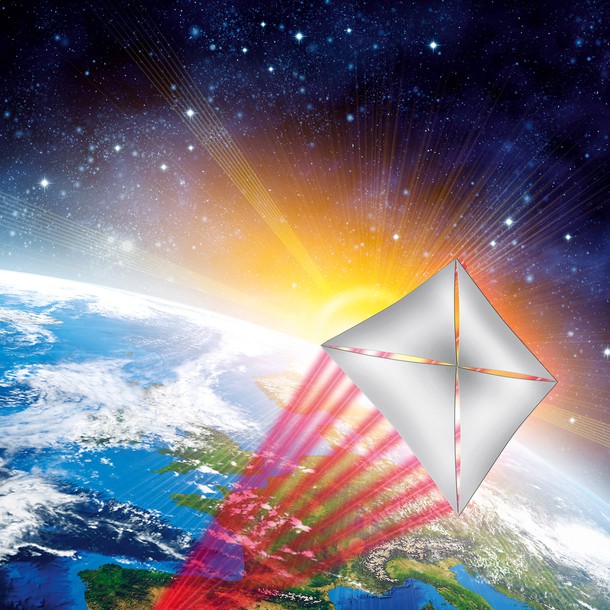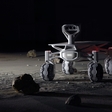
With any luck, miniature robots featuring innovative propulsion systems will be sent out to the nearest star.
Though still unconfirmed at the time of release, Der Spiegel broke the news that the astronomers had discovered a rocky planet not far from the star closest to Earth, Proxima Centauri. The mysterious planet orbits Proxima Centauri, which is a part of a system of three stars, at roughly the same distance that Mercury revolves around the Sun. Even though we know very little about it, the fact that the star is a cool red dwarf, which means that the planet still lies within the Goldilocks Zone and there is a high chance that it contains conditions that could sustain life.
PROXIMITY MATTERS
Exploration has led to the discovery of many planets, from gas giants to smaller rocky and Earth-like planets. But given their distance and the currently-available technology, none of them are possible to reach. 1400 light years away from us, one such example is Kepler 452b, which would take 2.5 million years to get to by rocket. For that reason, the discovery of the Proxima b planet, which lies a good four light years away from our Solar system, is that much more important. It is known to be slightly bigger than Earth, has a rocky surface and orbits its parent star in 11 Earth days. Because of its position in relation to the star, the newfound planet has a suitable surface temperature that will, providing liquid water is also located on it, further substantiate a theory that hints at a possibility of life. Because of the intense ultraviolet and x-ray radiation emitted by the red dwarf star, that idea may not be viable, if the planet turns out to be without a strong magnetic field and adequate atmospheric composition. What we do know is that the climate on Proxima b almost certainly differs from ours on Earth, that there are no seasons and that the planet most likely always faces the star with the same side. Normally that would mean that one side is baking hot and other icy cold, but this type of a star may prove to have an acceptable temperature.
ODD TRIO OF STARS
Although Proxima Centauri, the closest star in the sky, appears to be a single celestial body, it is in fact part of the Alpha Centauri system of three stars, which lie in rather close proximity to one another, and orbit a common center of gravity. The trio of stars is 4.4 light years away from Earth, or 40 billion kilometers--a huge distance, from our perspective of speed. The farthest voyage out ever made has been by Voyager 1 which, according to some scientists, traveled beyond our solar system and into interstellar space, but is still 80,000 years away from covering the abovementioned distance. Even if the planet is capable of supporting life, it will be a while before any human will set his or her foot on it. The distances are just too long and beyond our imagination, especially when it comes to the neighboring universe. That doesn't mean that robots couldn't go there. A group of visionaries and wealthy moguls launched a project called "Starshot," even before the planet was discovered.
COASTING THROUGH UNIVERSE
The project is being run by an international team of scientists, engineers and astronauts, with the objective of designing a fleet of compact and lightweight space probes, each the size of a smart phone. Because the existing propulsion systems are far from suitable, the probes will be propelled by a "solar sail," powered by a powerful Earth-based laser. Traveling at 20% the speed of light, the probes would cover the 4.37 light years distance to the star in about 20 years. The small dimensions of the spacecraft, which would consist of a chip weighing a few grams (called a "Starchip" and featuring four 2MP cameras, an atomic battery, processors and communication interface) and a maximum 4x4 m sail (possibly made of graphite), would allow for dozens of such crafts to go on a mission. At least, that's the idea. There are still many unknowns, such as how to produce the battery and a sail that will endure the laser shock, or how the "Starchips" will efficiently communicate with Earth. What speaks in favor of the project is the number of probes. Even if somewhere along the way most of them fail, there will always be a few of those that make it. We can only hope.
INTERSTELLAR MEDIUM IS NOT EMPTY
Consisting of lone atoms and dust particles, interstellar space spurred a group of experts to examine what may occur in case of a collision, if we bear in mind that even a single atom can pose a threat at the aforementioned traveling speed. More important than a physical collision itself is its subsequent release of energy. Heating up, the site of a collision can damage the craft in two ways. If the temperature is high enough, the material which the craft is made of will partially evaporate into space, while the rest will melt, deforming in the process of coagulation. With the help of interstellar gas concentration measurements and lab-controlled quartz explosions, the scientists were able to anticipate the extent of damage during collision. While hydrogen and helium atoms are most common, the heavier but less represented elements, such as oxygen, iron and magnesium, are far more dangerous. Even then, a spacecraft would incur negligible damage of a mere 0.1 mm in depth.
Dust particles are a different story, since they are comprised of many different atoms, all of which would act at the time of collision. If we consider the traveling speed of the craft, a larger particle measuring in at only 15 micrometers (which isn't visible to the naked eye) would almost certainly destroy the craft, causing 1.5 mm of its surface to evaporate, and a further 10 mm to melt away. Considering the small size of the crafts, where every gram counts and where heavy, thick shields are not an option, the scientists hope to achieve better protection, and minimize the damage caused by the impact, by coating the craft in beryllium copper. But the lifeline lies in probability. With very few sufficiently large particles in space, and a big fleet of crafts dispatched, the probability that one of them will reach the goal rises significantly.
IT MAY WORK OUT NEVERTHELESS
The team also has a few ideas on how to reduce the extent of the damage. The simplest would be to trim down the cross-section of the craft perpendicularly to its path, which involves folding the sail at maximum speed and using it as a shield. But since the solar sail is also supposed to assume the function of an antenna, such a scenario is most likely not possible. Ideally, the craft would be as flat as possible, in order to limit the area of collision to its thinnest axis, which would, at 0.1 mm, dramatically reduce the exposure to collision. Because heating triggered by a collision is the biggest problem, in terms of damage, the scientists would also use a more temperature-resistant graphite, in addition to beryllium copper. Indirectly, following a collision with a dust particle, a small jet of evaporated material may somewhat alter the flight path and velocity at which the craft is traveling. Should the incident take place far from the destination, even the tiniest deviation may result in the craft missing the target. The craft will be equipped with tiny gauges, which will be able to produce useful information only when close to the "target." Fortunately, there are very few large enough particles with the capacity to change the traveling direction of the craft to such an extent that it wouldn't be able to offset the deviation and right its route with its built-in photon thrusters.
Until we come by a significantly faster form of space propulsion, this remains the only way to venture out into the world of stars. Some believe this sort of expedition is necessary for humankind to survive. Whatever the case may be, even if we never get there, seeing another solar system and the surface of an alien planet would be amazing. To this end, a fleet of nano-probes is, at this point in time, technologically probably the most advanced way to go. But even if the team overcomes all obstacles and ends up dispatching the probes, it will be a long wait before we receive a video of the alien solar system.



